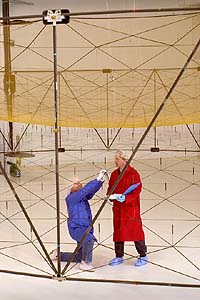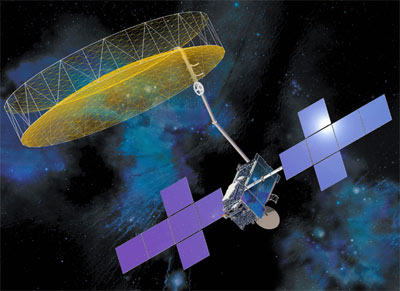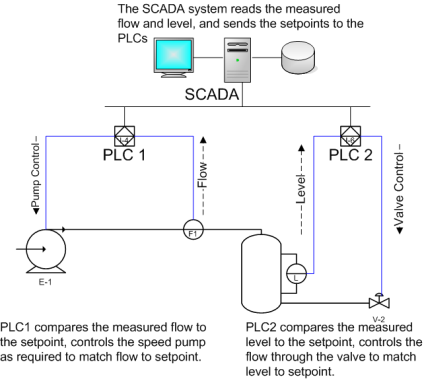Globalstar Gets ATC, Inmarsat Does SCADA
Posted by Sam Churchill on November 4th, 2008Globalstar, the LEO-based satphone service, today announced that the U.S. FCC has issued an Order and Authorization modifying Globalstar’s authority to offer Ancillary Terrestrial Component (ATC) services in the United States. This modification permits Globalstar’s spectrum to be used to deploy wireless WiMAX services to over 500 rural American communities that currently do not have adequate access to terrestrial-based broadband voice and data services.
 In April of this year the FCC authorized Globalstar to use up to 19.275 MHz of its spectrum for ATC services.
In April of this year the FCC authorized Globalstar to use up to 19.275 MHz of its spectrum for ATC services.
In its release the FCC stated, “We modify Globalstar’s license to permit use of the WiMAX air interface protocol…permitting Globalstar and its spectrum lessee, Open Range Communications, Inc. (’Open Range’), to commence deployment of a broadband service consistent with a $267 million loan commitment from the Department of Agriculture’s Rural Development Utilities Program.” This financing is contingent on various FCC conditions and other governmental approvals.
Jay Monroe, CEO and Chairman of Globalstar, said, “We are very pleased that the FCC has authorized Globalstar and our WiMAX partner to proceed with adding WiMAX service to our mobile satellite service in rural communities throughout America beginning next year. Those living in unserved and underserved small towns and rural communities will, for the first time, have access to services that urban and suburban residents and small businesses now take for granted. We expect our partner to initially deploy infrastructure in more than 500 rural communities with the ability to expand the relationship over the next six years to additional markets covering 50 million people or about 15% of the U.S. population.”
This is good news for the troubled satellite phone company which has run into a serious situation with deteriorating S Band transponders. It has resulted in the loss of reliable, 2-way satellite phone service. The company has been promoting their GPS tracking technology as a result. That’s because GPS tracking uses a different (lower) frequency, but only offers a 1-way upstream connection. Without reliable 2-way phone service, Globalstar will loose marketshare to fellow LEO satphone provider Iridium and to new GEO-based satphone providers Mobile Satellite Ventures and ICO.
Until the new second-generation Globalstar satellite constellation is operational, Globalstar is offering its Optimum Satellite Availability T-tool (OSAT) on its Internet site, which subscribers may use to predict when one or more unaffected satellites will be overhead at any specific geographic location.
Mobile Satellite Ventures (MSV) has been awarded multiple ATC patents by the U.S. Patent and Trademark Office for their ATC technology which re-uses satellite frequencies on terrestrial towers for better penetration indoors and in cars. ATC also allows for smaller, cheaper handsets. ICO, with investements by Craig McCaw, also plans a nationwide network of ATC repeaters to compliment its huge geosychronous satphone plaform. Both MSV and ICO hope to offer services next year.
As Telephony Magazine explains, when the FCC issued its ATC rulings in 2003-2004, it opened new horizons for a number of players in the L and S Bands, including TerreStar Networks and MSV, and gave them the opportunity to turbo-charge their business plans.
In the S Band alone, 40 MHz of spectrum is available to licensees for combined terrestrial wireless and satellite service use. The ATC ruling allows these satellite spectrum holders to use their satellite phone spectrum on terrestrial radio towers. It provides the flexibility to offer services, similar to cellular, with better reach inside cars and buildings, using smaller phones.
TerreStar plans to launch its TerreStar-1 satellite (above) in the second quarter of next year. Earlier the company had planned on a Dec. 2008 to Feb. 2009 launch.
 ICO G1 was successfully launched on April 14, 2008. G1 is now on station at 92.85 degrees West Longitude in geosynchronous orbit.
ICO G1 was successfully launched on April 14, 2008. G1 is now on station at 92.85 degrees West Longitude in geosynchronous orbit.
In September, ICO announced that WiMAX provider Clearwire will join as a service partner for its alpha trial in Raleigh Durham, North Carolina, and that an additional trial will take place in Las Vegas, NV. ICO will use DVB-SH for mobile video, delivering 10-15 channels of premium live TV content for 7–15 inch screens. Harris also built a reflector for TerreStar Networks’s geostationary TerreStar-1 mobile communications satellite; and two reflectors for XM Satellite Radio’s XM-5 radio broadcast satellite.
Both ICO and TerreStar have 20 MHz each in the MSS band (2.0/2.1 GHz). They’ll deliver spotbeam satphone services from geosynchronous space, supplemented with terrestrial repeaters.
In other news, Stratos Global, a leading global provider of remote communications, today introduced its BGAN SCADA service for remote, unmanned SCADA applications. SCADA, for Supervisory Control And Data Acquisition, refers to an industrial control system often used to control remote water pumps and treatment plants, oil and gas pipelines, electrical power transmission and distribution, and other facilities that need remote monitoring.
The new Stratos BGAN SCADA service will be commercially available in Q1 2009 and utilizes Inmarsat’s BGAN (Broadband Global Area Network) service, an L-band mobile satellite offering that uses portable, lightweight terminals to provide high-speed data (up to 492 kbps) and voice connectivity anywhere in the world.
The Stratos BGAN SCADA service supports applications for data collection and monitoring of remote assets - including utility substations and oil or gas pipelines. In addition to custom solutions, Stratos also offers enhanced IP or serial polling and 24×7 network monitoring from its Network Operations Center (NOC). The NOC is staffed with trained, SCADA-network experienced operators who ensure the highest possible network availability and provide specific insight for SCADA applications.
The new service is made possible by an agreement, announced today, that names Stratos as the exclusive global distributor of Addvalue’s new SABRE Ranger BGAN SCADA terminal. The SABRE Ranger is a ruggedized, compact BGAN terminal.
Stratos is one of the world’s largest distributors of Inmarsat’s BGAN (Broadband Global Area Network) service. Stratos says BGAN is ideally suited to enable communications in areas where terrestrial or cellular networks are damaged, congested, non-existent or too difficult to deploy.
The Stratos BGAN SCADA service complements DataSat II from Stratos, the Company’s Ku-band, VSAT-based SCADA service introduced earlier this year. The Stratos BGAN SCADA service can serve as a network-independent backup solution to DataSat II, ensuring seamless connectivity in case of extreme weather. More than 10,000 Stratos VSAT-based SCADA terminals have been deployed for a wide range of markets nationwide.
source: dailywireless.org






1 comment:
Great to hear FCC approved the deal. Clearwire and Sprint have been working on this for some time and at some point in time they dropped the deal but I’m glad to hear WiMAX will finally go nation wide.
— http://www.WiMAXED.com
Post a Comment